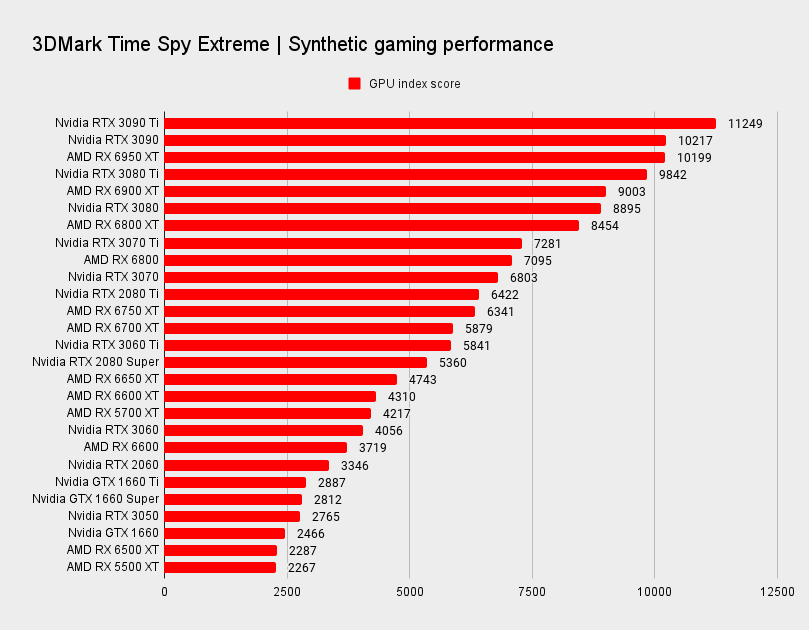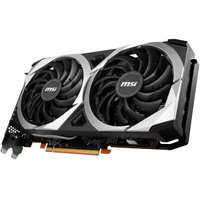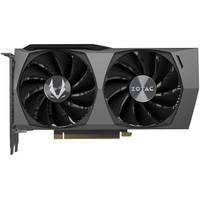This below-MSRP Prime Day GPU deal is currently the best budget graphics card you can buy
Shout it from the rooftops: there are actual affordable graphics cards that are now below MSRP.

What the hell is this? Two actual Prime Day graphics card deals that are... wait for it... below MSRP!? Well, Dr. Lisa Su really is smiling down on us today, as this pair of AMD GPUs—that you would legitimately want to stick in your PC—are on sale right now for less than Team Radeon wanted at launch late last year.
Given the last couple years of GPU mining booms and supply chain crises, that's absolutely something to celebrate. We've had the ultra expensive RX 6900 XT or RX 6950 XT dropping a touch below MSRP before, but they're so prohibitively expensive it's hard to make a case for spending a thousand bucks on them even with a discount.
Today's sub-MSRP sales aren't happening across the board, but prices everywhere are trending ever closer to MSRP, especially with the discounts of Prime Day.
The Prime Day Nvidia GPU deals, for example, haven't produced any sub-MSRP cards, and the main event is almost over. That's why we've been recommending most people with the choice of graphics card ought to put their money towards an AMD card. Basically, where performance is similar the Radeon GPU will be cheaper.
That's the case here with the RX 6600 XT and the RX 6600. A lot of people have been looking at the RTX 3060 as the more desirable mainstream GPU of this current generation and, while it does have some allure thanks to the infeasibly large 12GB of video memory attached to it, the RX 6600 XT comfortably outperforms it. And costs a little less than even the cheapest RTX 3060 we've seen today.
MSI Mech RX 6600 XT | 8GB GDDR6 | 2,048 shaders | 2,602MHz | $399.99 $359.99 at Newegg (save $40)
Again, the smart money is buying AMD graphics cards at the low end of the GPU market. The RX 6600 XT is both cheaper and faster than the RTX 3060, despite losing out on the memory front. Don't be fooled by that 12GB vs. 8GB thing.
Zotac RTX 3060 Twin Edge OC | 12GB GDDR6 | 3,584 shaders | 1,807MHz | $549.99 $379.99 at Amazon (save $170)
This is the cheapest RTX 3060 we've found this Prime Day, and rather close to the original MSRP, too. It's a decent version of Nvidia's mainstream GPU, with good cooling and a dual-slot design.
The RX 6600 is a hair slower than Nvidia's card, and yet it is over $120 cheaper today with this excellent deal at Amazon. I wasn't a massive fan when I tested this exact card, the PowerColor Fighter RX 6600, largely because of the price at the time. But when it's around $250, that makes this an outstanding budget gaming GPU.
PowerColor Fighter RX 6600 | 8GB GDDR6 | 1,792 shaders | 2,491MHz Boost | $369.99 $254.99 at Amazon (save $115)
Well, this is certainly a sight for sore eyes, a graphics card worth a damn that is actually under it's original MSRP. Huzzah, it's finally happened, people. The RX 6600 wasn't our favorite card when it launched, but it's now significantly cheaper than an RTX 3060, and only a little behind on gaming performance. That makes it a great budget gaming GPU today.
If you want an idea of where the cards stack up in terms of performance, we've put together this simple hierarchy of the current generation of GPUs from AMD and Nvidia and a handful of the last generation, too. It's based on our own benchmarks for the most part, and then also the average 3DMark Time Spy Extreme scores from UL's database for some of the older cards. It actually tracks pretty well against an aggregated average 1440p frame rate across our own benchmarking suite for each card.
And you can see just where the RX 6600 XT, RTX 3060, and RX 6600 stack up.

Keep up to date with the most important stories and the best deals, as picked by the PC Gamer team.

Dave has been gaming since the days of Zaxxon and Lady Bug on the Colecovision, and code books for the Commodore Vic 20 (Death Race 2000!). He built his first gaming PC at the tender age of 16, and finally finished bug-fixing the Cyrix-based system around a year later. When he dropped it out of the window. He first started writing for Official PlayStation Magazine and Xbox World many decades ago, then moved onto PC Format full-time, then PC Gamer, TechRadar, and T3 among others. Now he's back, writing about the nightmarish graphics card market, CPUs with more cores than sense, gaming laptops hotter than the sun, and SSDs more capacious than a Cybertruck.




